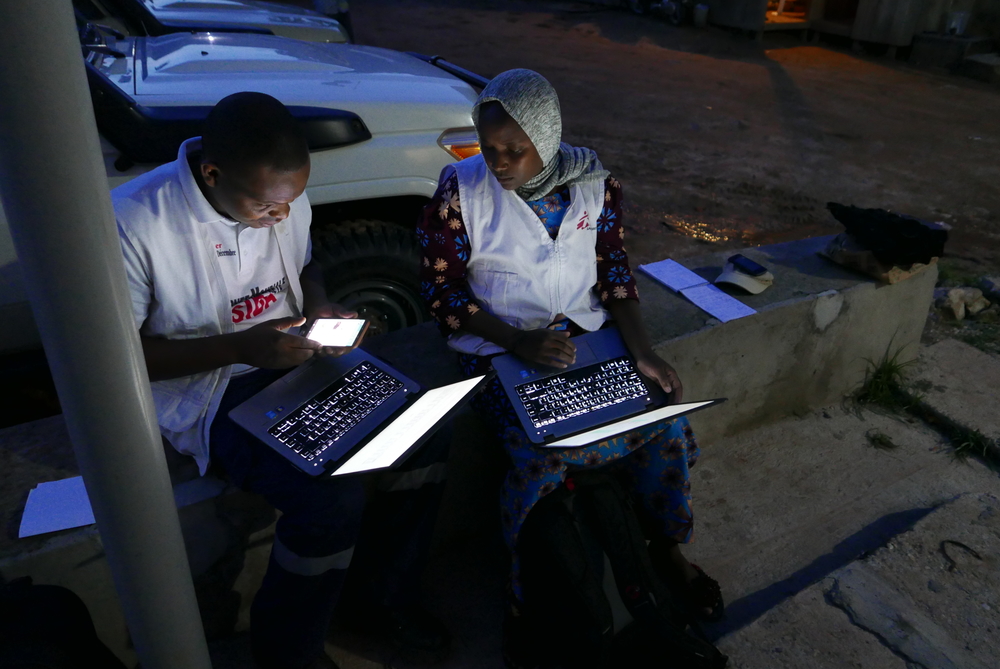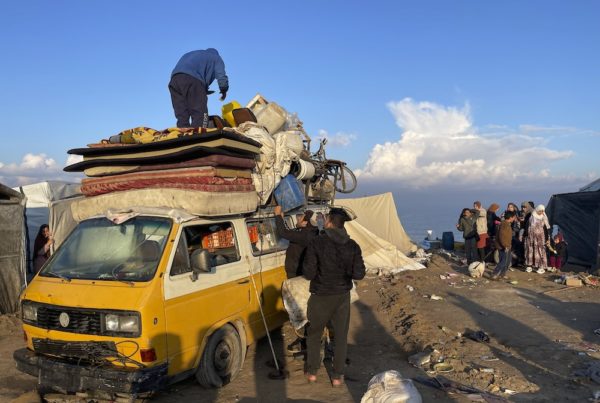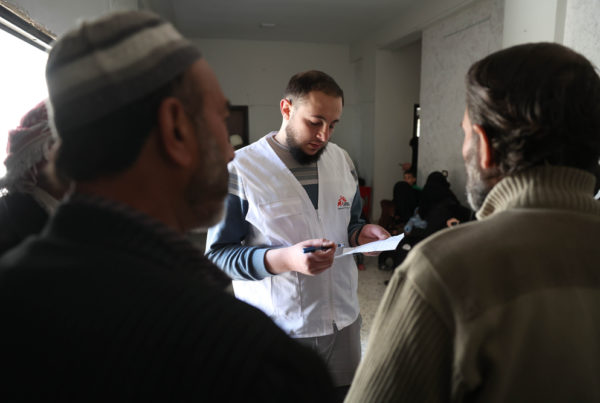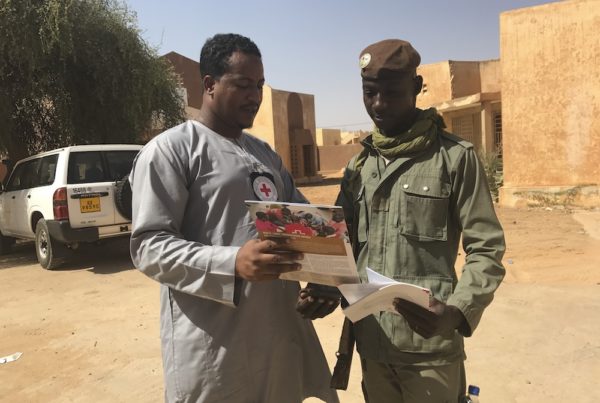
Wherever they may live, people today are connected. Information travels, and social media has enabled more and more people to exchange and spread news online, regardless of whether they are true or false.
False information is dangerous. A baseless rumour can harm humanitarian operations by preventing humanitarian practitioners from delivering life-saving care or resources to people in need of assistance. It may even threaten the safety of aid recipients as well humanitarian staff. It can make—or unmake—the efforts of humanitarians in a crisis setting.
How can you, as a humanitarian professionals, deal with this growing challenge? How can you re-negotiate trust with communities after it has been lost?
The CCHN asked humanitarian professionals with experience in this domain to tell us about their challenges and how they are facing them. Read more about what they shared with us just below.
“Even in the most remote areas, people are accessing the internet. They are not in an information desert.”
– Sandrine Tiller, Humanitarian Access and Networking Team Coordinator at Médecins Sans Frontières
False information: What is it, and how does it spread?
False or falsified information comes in various forms; understanding what they are is critical to designing an effective response strategy. This is one of the ways to categorise it:
- Misinformation: the information shared is misleading, but the source disseminating it has no intent to harm.
- Disinformation: the information shared is false and the source is deliberately attempting to manipulate facts.
- Malinformation: the information shared is partially true; the intent is to harm a person or organisation by revealing private information.
More than ever, people require information in crisis settings: they want to know what is happening, whether they and their families will be safe, what to do and where to go.
This need is often satisfied through social media, where information is shared and reshared without necessarily mentioning its source—resulting in vast amounts of both true and false information travelling rapidly through communities.
False information, however, spreads much faster online, building misguiding narratives and eroding trust in legitimate sources such as high-quality media or public authorities, and humanitarian organisations.
First, prevent and mitigate the impact of false information.
As a humanitarian, you can take steps to limit the risks associated with the spread of mis- and disinformation before it happens. Being proactive is a much more effective strategy than reacting to an information crisis.
1. Evaluate the information landscape.
Information travels differently depending on the operational context.
Understanding where and how communities obtain their information will help you identify who they trust and the main channels they use to communicate. Ask yourself:
- How does information travel in this context?
- How many sources of information are there?
- How coordinated are those sources? Do they provide the same information?
This will build your understanding of the narratives that are created and spread through communities, and which ones are prevalent. It can help you target deceitful narratives even before they become widespread.
Tools to evaluate the information landscape
- CCHN’s tools such as the island of agreement, which enables you to classify the information and norms in the community.
- Another useful strategy is to map the community: draw the relationships between actors in the community and their influence on the information landscape.
- Internews’ Information Ecosystem Assessment provides a useful methodology to evaluate your own information landscape.
- Oxfam’s Community Perception Tracker can help you systematically collect and analyse community perceptions that affect your operations.
- Médecins Sans Frontières’s digital platform “MSF Listen” (internal tool available to MSF staff). The code for this platform is open source on GitHub and you can find it here.
2. Provide clear and transparent information proactively (also known as “pre-bunking”).
Once you have taken stock of how information travels and which narratives are most prevalent, you should be proactive in your own communication strategy.
- Explain what your organisation is doing and how you are operating in the most transparent way possible.
- Address people’s questions and concerns.
- Listen to the feedback you receive from the community.
Information can simultaneously come from various sources: from within the community, traditional leaders, local and national media, or even from those who emigrated out of the country. These sources may contradict each other, leaving people confused and eroding trust in your organisation.
Being proactive in your communication allows you to get ahead of potential misinterpretations of your activities and clarify the objectives of your operations.
3. Prepare your team for a potential information crisis.
Having a strong crisis response plan will enable your team to know how to react quickly and efficiently.
- Create a social media monitoring team within your organisation.
- Create a potential information crisis scenario and run response simulations.
- Gather contacts at major tech companies to whom you can relay evidence in case of severe digital threats.
Unfortunately, no matter how prepared you are, an information crisis may hit. When it happens, how can you mitigate its impacts?
Listen to Sandrine Tiller from MSF explain what strategies she and her team have put in place to counter mis- and disinformation in humanitarian crises.
In case of an information crisis, follow these steps.
When an information crisis strikes, your organisation may suddenly attract much more attention, and be scrutinised for its every move. In this context, it is vital to have strategies in place to understand and limit the risks of the spread of misinformation.
1. Do not wait for the crisis to end to act.
Tackle the false information right away. Leaving a disinformation campaign to grow while hoping it will go away is dangerous, and the absence of an alternative can cement belief in false and unverified information. Saying nothing allows others to talk for you, and debunking false claims is much more difficult the longer you wait
2. Strengthen your social media monitoring and digital crisis response strategy.
Find out what is being said and by whom. Even though monitoring social media should be part of any prevention strategy, it is critical to strengthen it by having a plan to manage digital risk, including threats to humanitarian workers. An information crisis is not just a communications issue: it affects all teams, and especially those working on the ground, who may be faced with its consequences in their operations.
3. Be transparent.
You have a mandate and limitations. You cannot do everything, even when people might expect you to. Be open to questions and criticisms, so that you can explain what you are doing, especially if it is perceived as controversial, debunk rumours quickly and limit the impact on the security of your staff and operations.
Watch Anastasiya Marchuk from the ICRC present on how she and her team have been dealing with the information crisis affecting humanitarian organisations in Ukraine.
If all else fails, focus on rebuilding trust after a false information campaign.
“The first casualty of mis- and disinformation is the truth, the second is trust.”
– Anastasiya Marchuk, Head of the International Committee of the Red Cross Sub-delegation in Odesa, Ukraine.
Once trust is lost with the community you are supporting, gaining it back is a monumental task. Undertaking it alone is impossible: mis- and disinformation does not only target a single organisation, but the entire information landscape. In an urgent crisis setting, you may have limited time to figure out how to best provide aid. What should you do?
1. Focus on understanding who is not trusted and why.
People may not trust your organisation, but they also may not trust the government, local authorities and the media.
2. Do not overload the information ecosystem.
Showering people with large amounts of information about how great your organisation is will not necessarily restore a positive public perception. Instead, focus on changing the structure of the information landscape to ensure that the right information reaches the right audience, even if it does not come from you.
3. Work with the actors that are already trusted in the community.
Build information networks around actors trusted by the community so that they provide coherent and coordinated information. People do not necessarily need to trust you; they need to trust reliable sources.
How does this work in practice? Listen to Anahí Ayala Iacucci from UNHCR explain how she rebuilt trust after the Ebola crisis in Liberia.
Managing an information crisis can be tricky. The spread of mis- and disinformation can have wide-ranging consequences on the community you are working in, your operational context and even the safety of your organisation.
One thing is certain: you must prepare and have strategies in place to address it.
Watch the full webinar and learn how Sandrine Tiller (MSF), Anahí Ayala Iacucci (UNHCR) and Anastasiya Marchuk (ICRC) have worked to prevent, mitigate and face mis- and disinformation in humanitarian operations.
Would you like to receive more blogs like this straight into your inbox? Subscribe to our newsletter!



